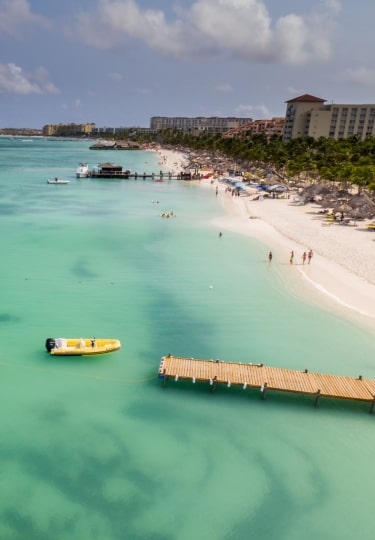Experience the best of this “One Happy Island” with these essential Aruba travel tips. Crystal clear waters, soft, crushed-coral sands, and fruity Aruba Ariba cocktails await at almost every turn, making the day’s hardest choice deciding which beach to lounge on first.
Luckily, the island’s location in the Lesser Antilles, a little off the coast of mainland South America, means it sits just below the so-called Hurricane belt, removing any worries about weather and when to visit.
Still, to get the most out of your trip, there are a few things to know before going to Aruba, from packing advice that ensures your sunscreen doesn’t fall foul of Aruba’s reef-protecting restrictions to where to find the best seafood. Come prepared and you’ll enjoy the perfect vacation on this idyllic island.
Learning a Little Papiamento is Appreciated, But Not Necessary
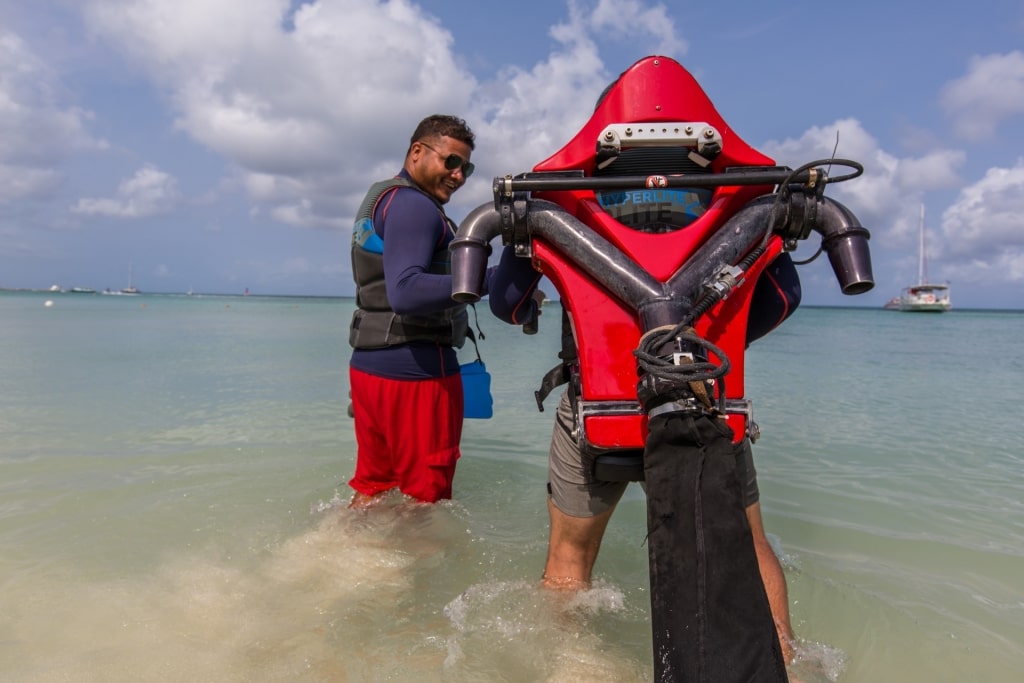
Aruba
The two official languages of Aruba are Papiamento—the local, Afro-Portuguese Creole-based language—and Dutch, due to Aruba being a constituent country of the Kingdom of the Netherlands.
However, most Arubans also speak two additional languages, Spanish and English, meaning you won’t have any problems ordering your beachside cocktails or buying souvenirs.
Still, learning a little of the local language is always appreciated and respectful, and there are a few common Papiamento phrases you’ll hear while exploring the island. “Bon bini” means welcome, and “danki” translates to thank you.
Bookmark the Perfect Beach
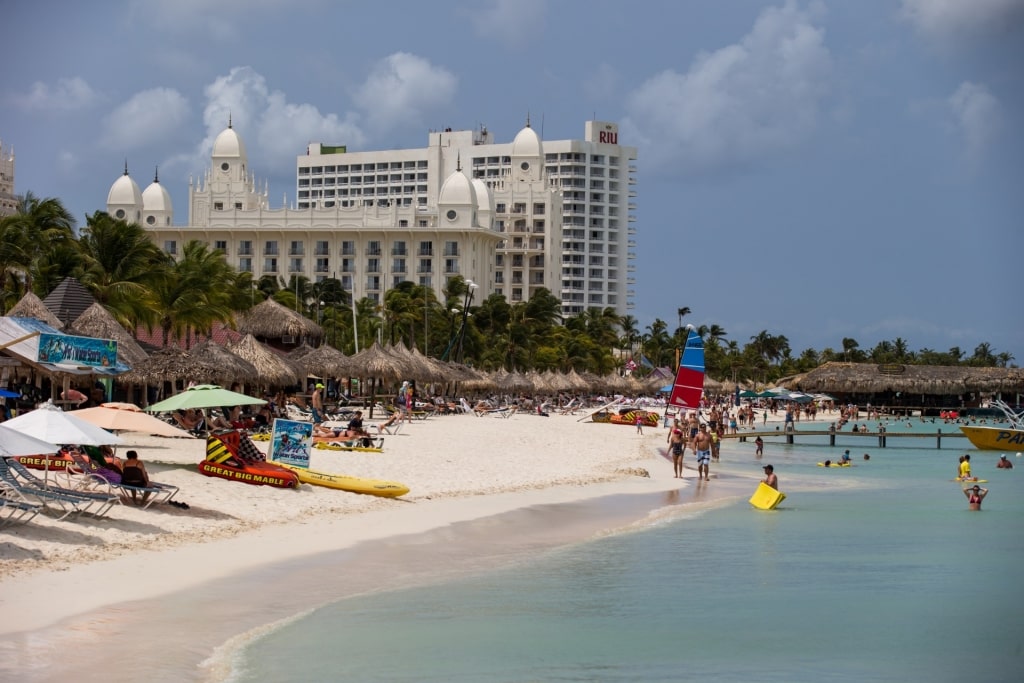
Beach in Aruba
One of the most important things to know before going to Aruba is which shoreline to make a beeline for, as the best beaches in Aruba come in all shapes and sizes.
For an atmospheric afternoon of watersports and beachside bars, venture to resort-backed Palm Beach, where a swathe of soft white sands leads to waters ripe for jet skiing or kayaking. If it’s serenity you’re seeking, then opt for a more secluded bay, such as mangrove-shrouded Mangel Halto.
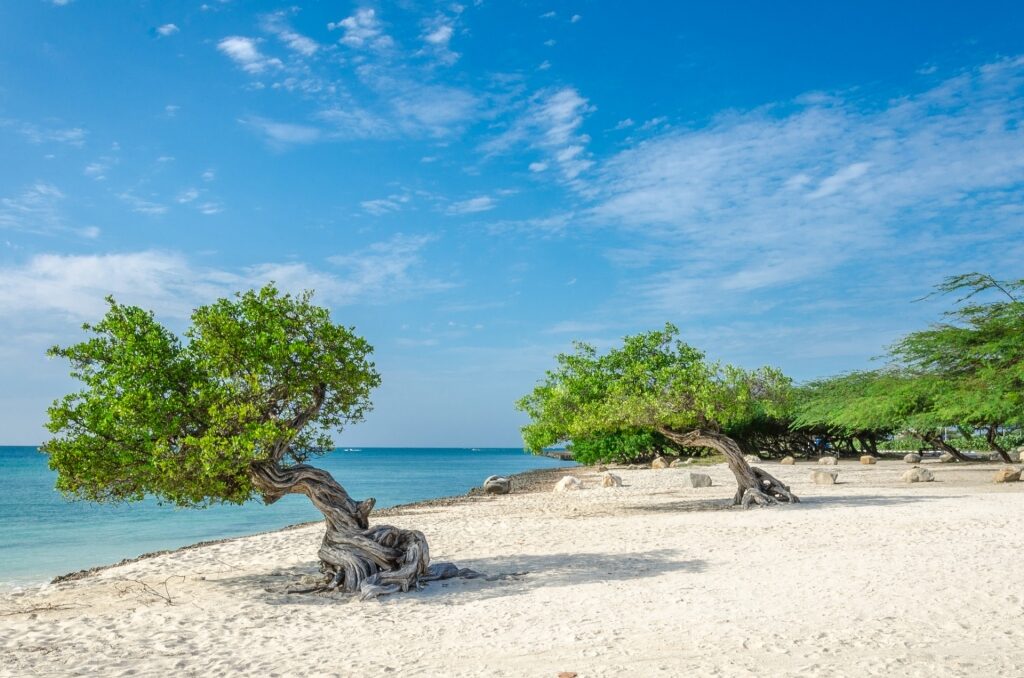
Eagle Beach
Or, if you want an iconic photo memory, head to Eagle Beach, where the island’s iconic tradewind-blown Fofoti trees rise from the sands. It’s also a great spot to try and spot turtles in the shallows.
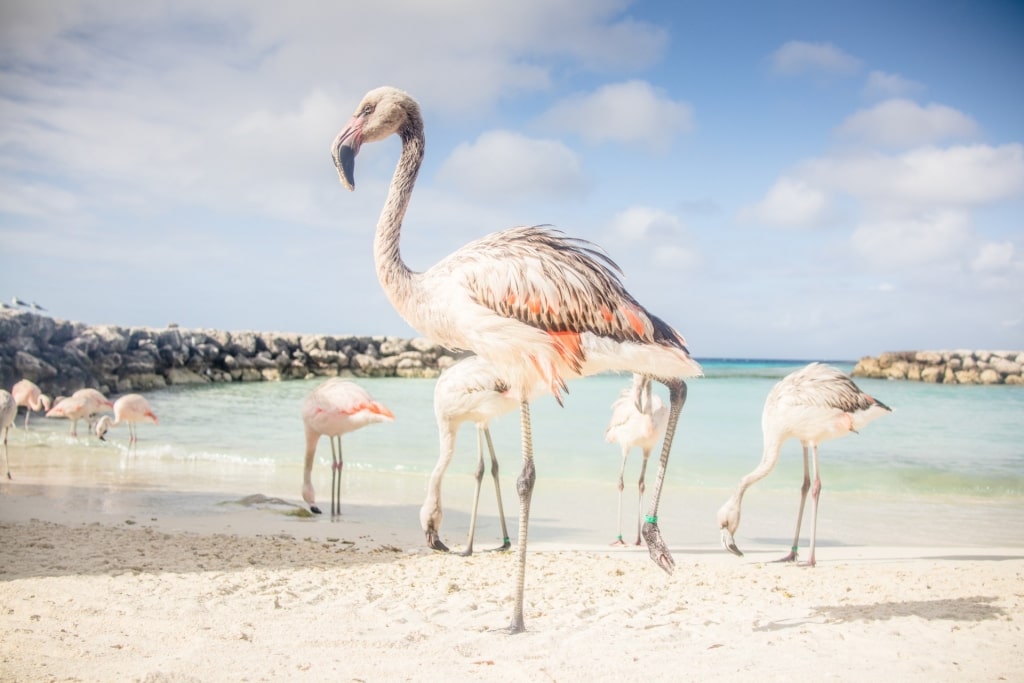
De Palm Island
Perhaps a private island is more your style? If so, book the short boat ride across to De Palm Island. Once on the coral-fringed islet, you can choose between indulging in a private cabana, snorkeling in Aruba and its most bath-warm waters, or letting your inner kid run free on one of the larger waterslides.
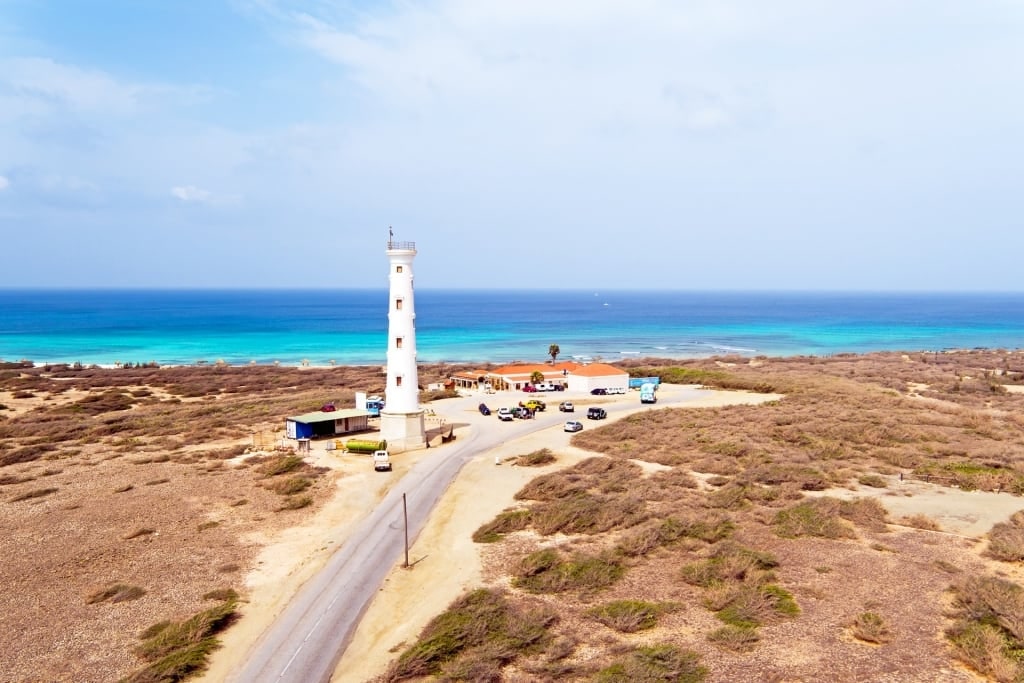
California Lighthouse
Meanwhile, one of the best things to do in Aruba for couples is to stroll amongst the Sasariwichi Dunes, a serene slow-rolling landscape far from the crowds, before taking it all in from above atop the California Lighthouse.
Pack Reef-Safe Sunscreen
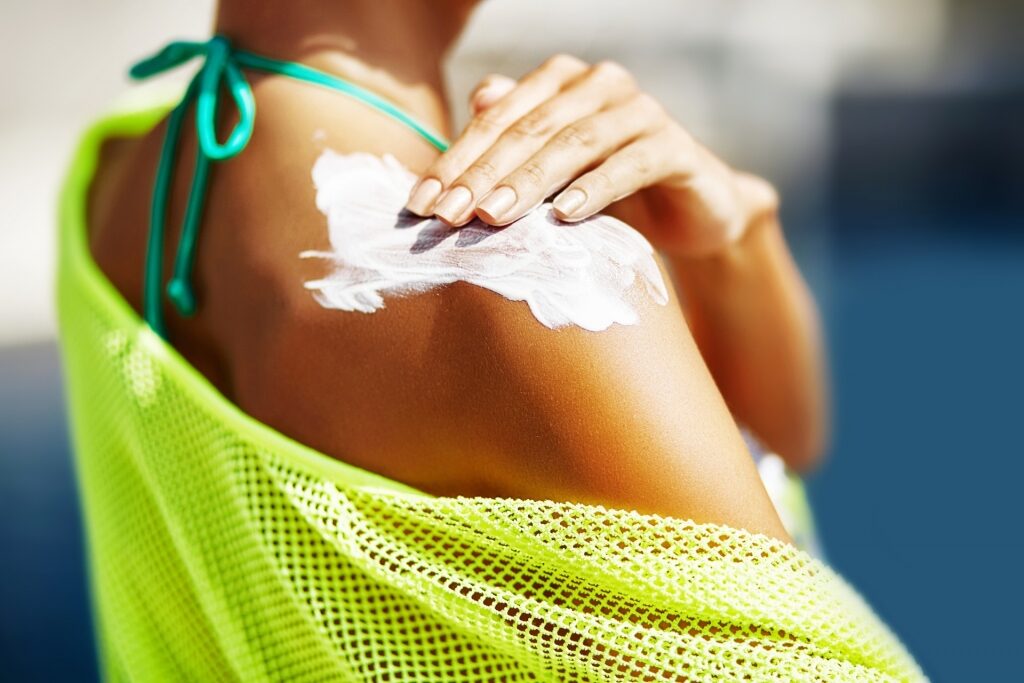
Sunscreen
Since the summer of 2020, Aruba has banned reef-harming sunscreens, which means those that include oxybenzone, a chemical that is toxic to corals and some marine life. This applies to imports as well as local sales.
As such, one of the most essential Aruba travel tips is to ensure you pack a “reef safe” sunscreen before your departure so you aren’t caught out trying to find one last minute. Aruba’s bright white sands are especially reflective of the sun’s rays, so a high SPF is highly advised.
Book Your Excursions Ahead
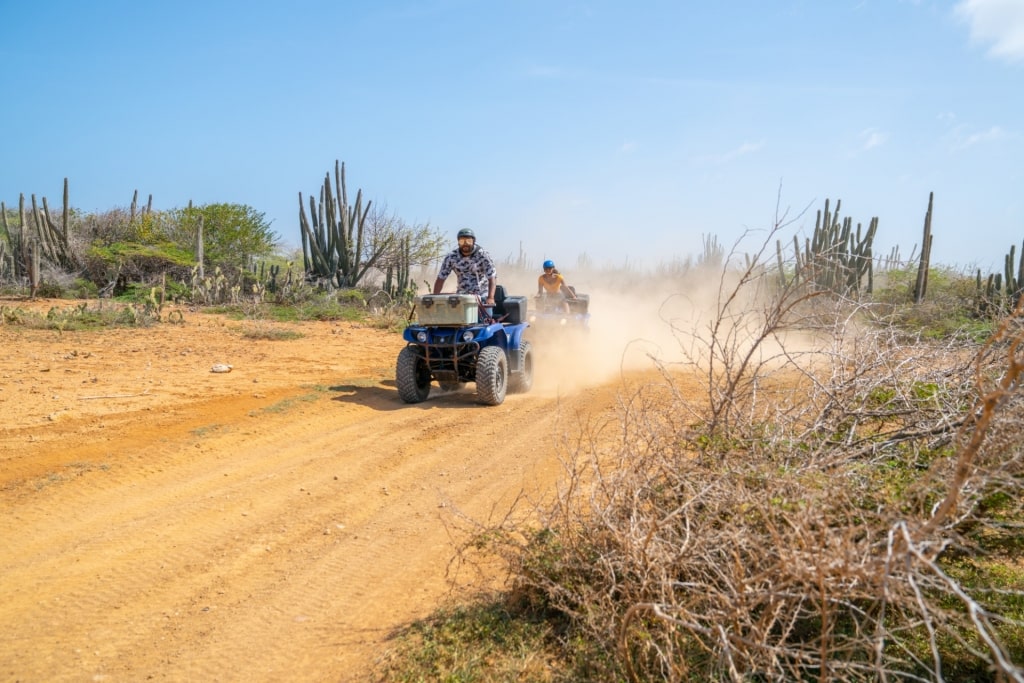
ATV in Aruba
If you’re not planning to hire a car in Aruba, or you want to guarantee access to some of the island’s most popular experiences, it’s essential to book your excursions ahead. This applies especially if you’re traveling in the peak seasons.
This Aruba travel tip is particularly important if you wish to enjoy one of the more eclectic activities on offer. These include horseback riding along the shoreline, scuba diving on one of Aruba’s many excellent wreck diving sites, or taking a private off-road tour through the cacti-strewn Arikok National Park.

Watersports in Aruba
Water sports rentals and smaller boat trips are usually arranged directly on the beach. However, if you want to secure a spot on one of the luxurious catamaran voyages, or even arrange a private sailing for you and your partner, these should be booked at least a few days before your arrival.
Get Familiar With Aruba’s Cuisine
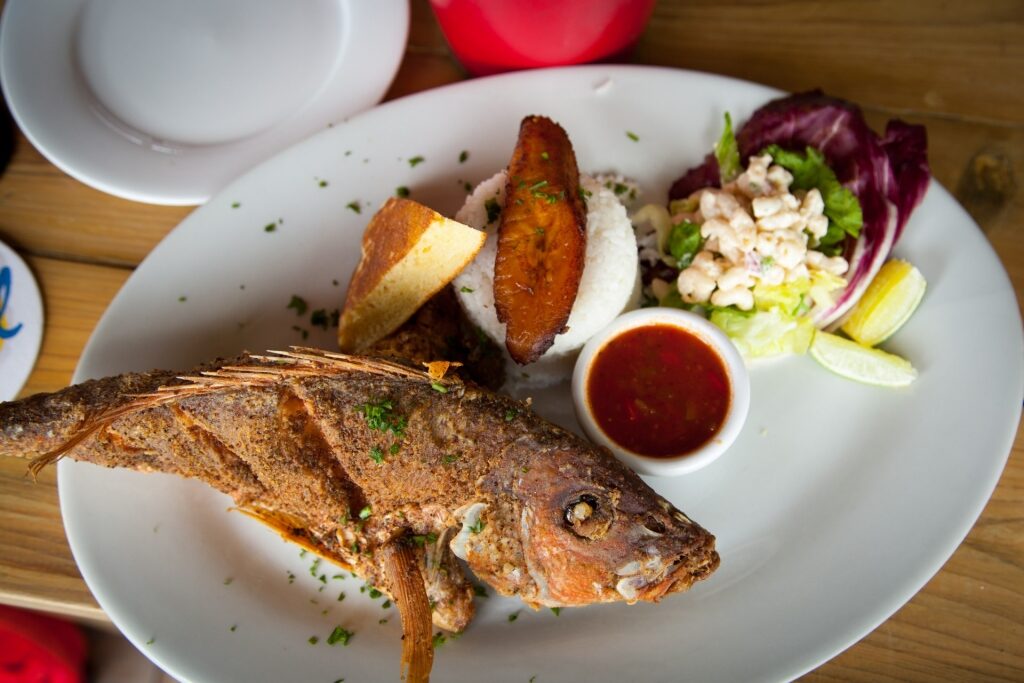
Snapper
Knowing the island’s signature dishes and drinks is perhaps one of the most important things to know before going to Aruba. After all, you don’t want to miss out on any of these delicious treats.
With an extensive menu influenced by various cuisines, including African, Dutch, Portuguese and South American, a little prior knowledge can take you on a tasty journey around the world.
Seafood unsurprisingly takes center stage, with snapper, shrimp, swordfish, mahi-mahi, conch, and many more fish dishes served in various ways, ranging from soups and stews to simply grilled.
Pisca hasa, fried fish in creole spices, is a staple Aruban dish that’s always highly recommended by locals.

Pastechi
Other specialties include snack-friendly pastechi (similar to an empanada), arroz moro (a rice and kidney bean dish that’s usually suitable for vegetarians), and the thick stoba stews, which are usually made from cabrito (goat) or karni (beef).
If you want to spice things up a little, then a sprinkling of pica di papaya, a local hot sauce of Madame Jeanette peppers and papaya will add a kick.
For something a little more unexpected, plan a visit to Aruba’s first (and only) vineyard, the boutique Alto Vista Winery, to sample wines harvested from desert-grown grapes.
Adventures Await Inland
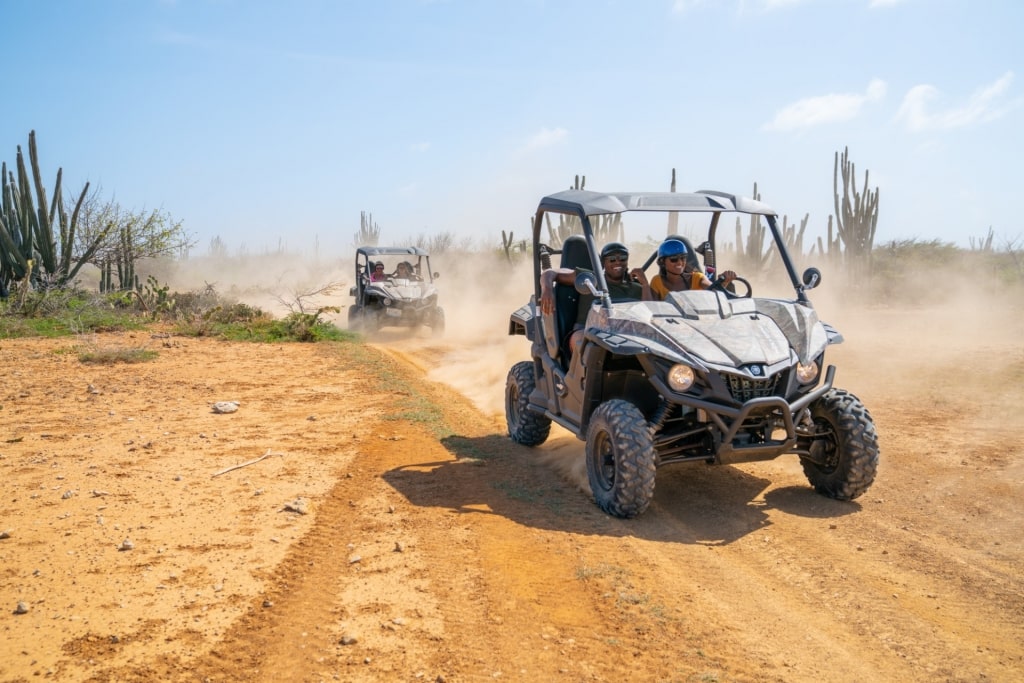
ATV in Aruba
While it’s certainly a challenge to tear yourself away from the plethora of paradisiacal beaches, one of the most underappreciated Aruba travel tips is to leave time for adventures in the island’s interior.
Most notable is the arid, desert-like landscapes of the cacti-strewn Arikok National Park, a protected area encompassing around 20 percent of the island.
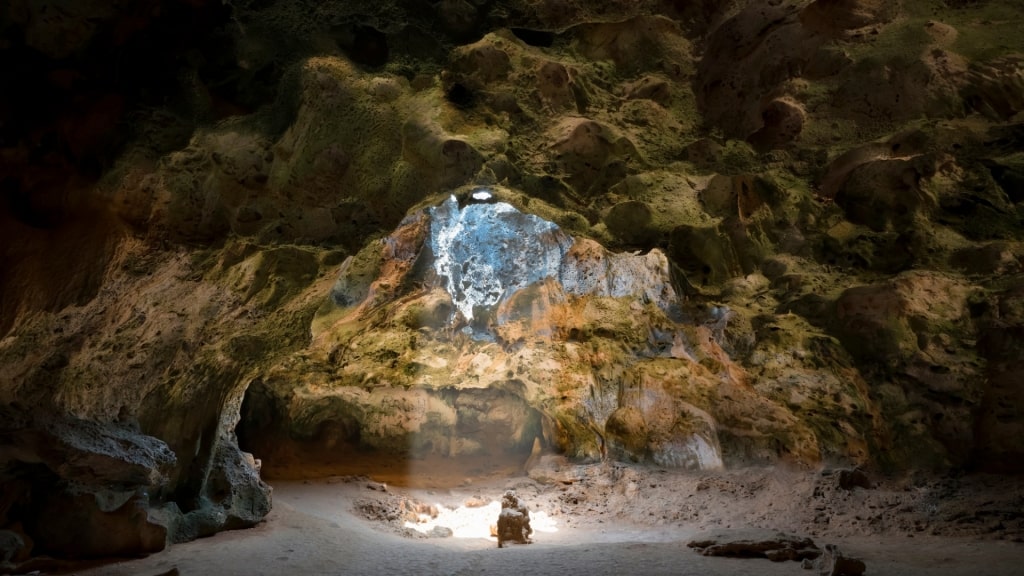
Quadirikiri Cave
Here, you can flit between cave systems, such as sky-light illuminated Quadirikiri, and Fontein, adorned with Arawak Indian drawings, and wild beaches leading to natural pools. You’ll also find the ruins of abandoned gold mining complexes.
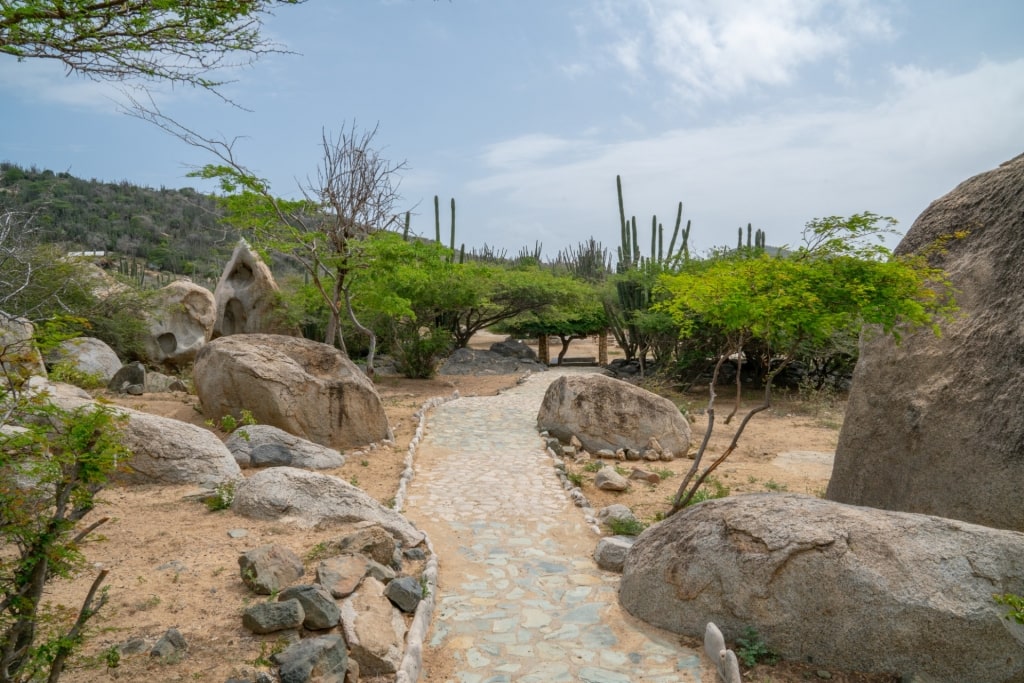
Casibari Rock Formations
Alternatively, another unmissable thing to do in Aruba is to head to the out-of-place-looking Casibari Rock Formations, a cluster of climbable giant boulders that offer far-reaching views in the heart of the island.
You Can Drink the Tap Water
One of the simplest Aruba travel tips is to pack a refillable water bottle. Due to an excellent desalination plant, a necessity as the island has no major natural water sources, you can drink the water directly from the tap. So there’s no need to buy plastic bottles to keep hydrated.
Bring Your Scuba Diving License
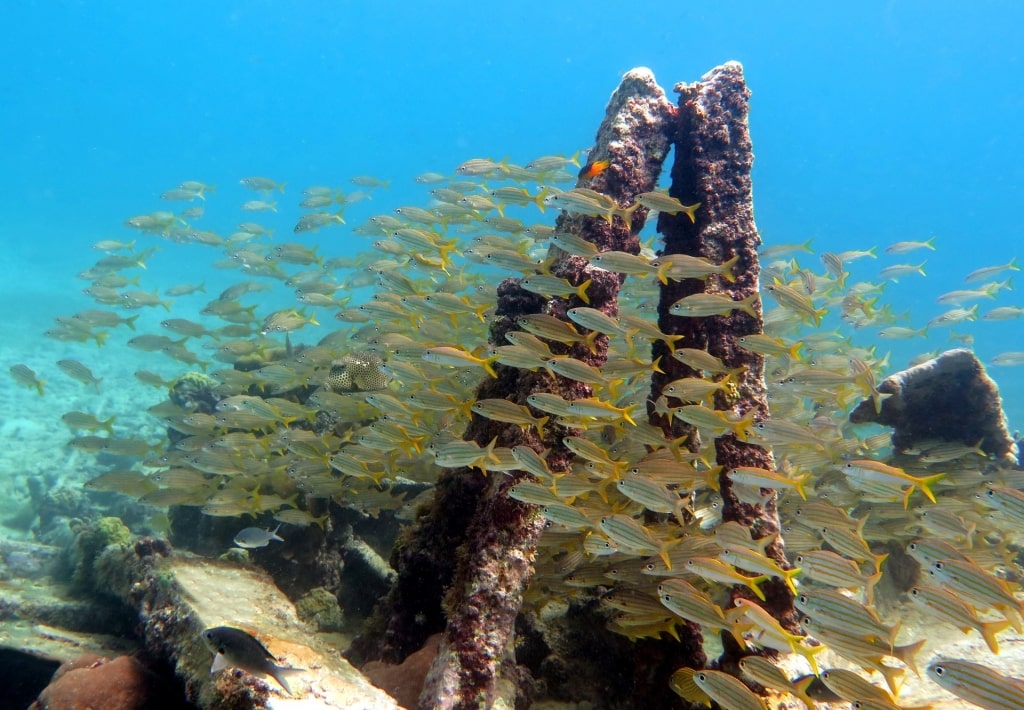
Pedernales Wreck
If you’re a scuba diver, one of the most important things to know before going to Aruba is that you should bring your diving license and logbook. Why? The island’s waters are home to some of the best wreck diving in the Caribbean.
Headliners include the Antilla Shipwreck, the largest diveable wreck in the Caribbean, and the Pedernales Wreck, which has blossomed into a marine-life-rich artificial reef.
Aruba’s best diving sites aren’t just about witnessing wrecks, though. There are plenty of other spectacular underwater sights to take in, ranging from colorful corals frequented by turtles to offshore reefs ideal for drift dives.
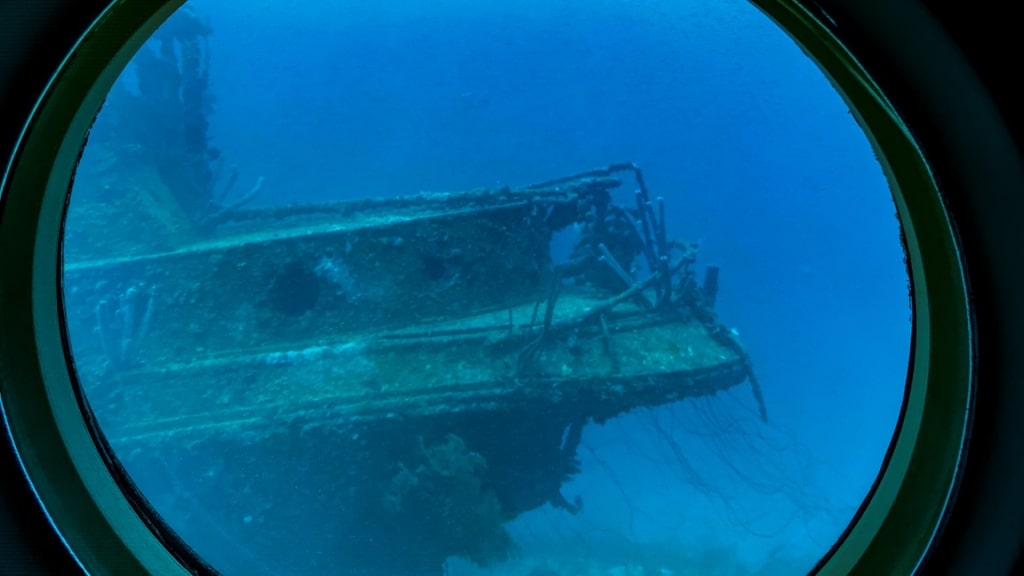
Atlantis Submarine
Even non-divers need not miss out, with the Atlantis Submarine offering an up-close look at the Arashi coral reef without getting wet.
Aruba’s Downtown Streetcar is Free, Taxi Fares are Fixed
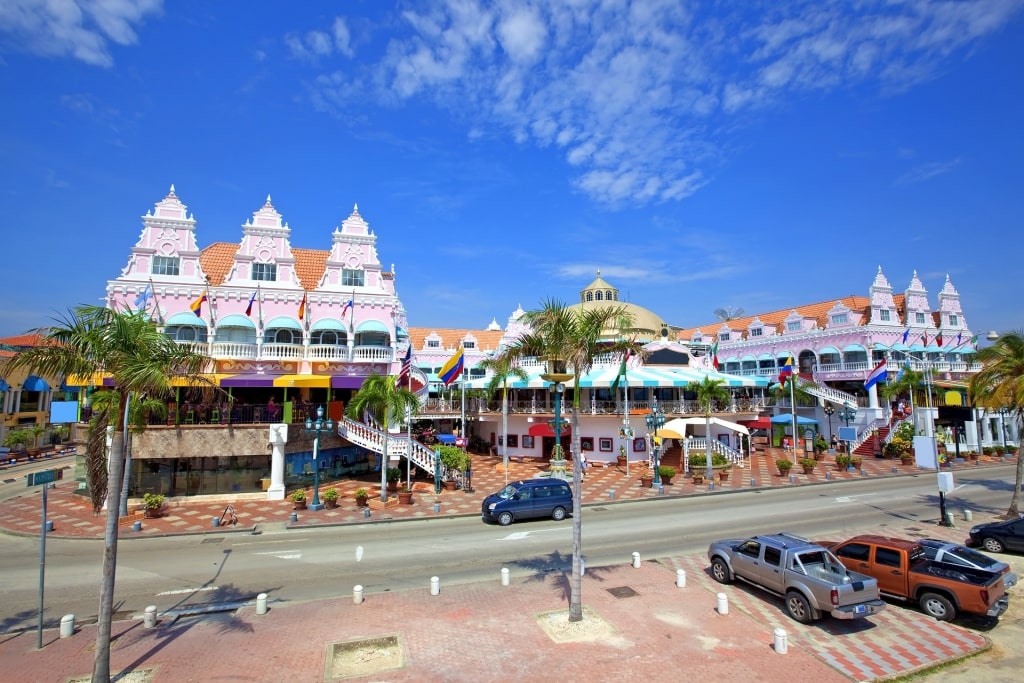
Oranjestad
Getting around Aruba is pretty straightforward; the island is only 21 miles long and just six miles at its widest point. Still, one of the handiest Aruba travel tips is to know about the complimentary Downtown Streetcar, a double-decker trolley that operates in a loop around central Oranjestad.
Not only is it a great way to get around, but it passes many of Aruba’s best places in the capital, such as Fort Zoutman and the Archaeological Museum.
If you do decide to take a taxi to travel outside the city, be aware that they operate on a fixed fee, which should be confirmed in advance. These rates are quoted in Aruban florins, which can be converted into US dollars at a fixed exchange rate.
Seek Out Local Souvenirs
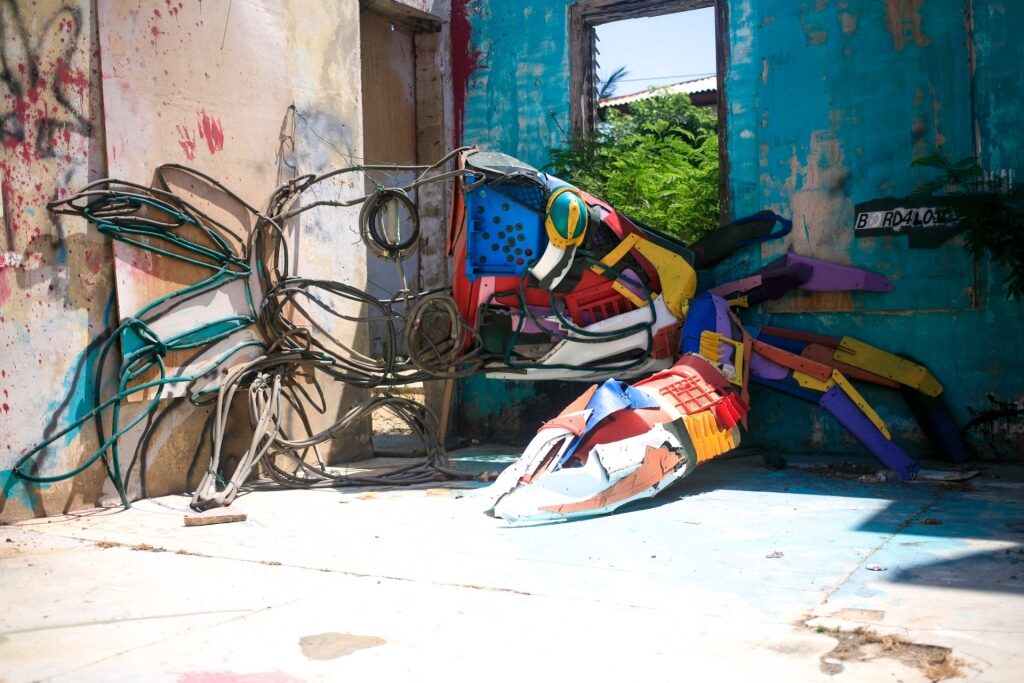
San Nicolas
Aruba’s imaginative soul spills out across the island. From the artisanal boutiques in the pastel-hued buildings of Oranjestad to the creative second city of San Nicolas, renowned for its street art, there’s no shortage of artists offering authentic pieces to bring a slice of Aruba home.
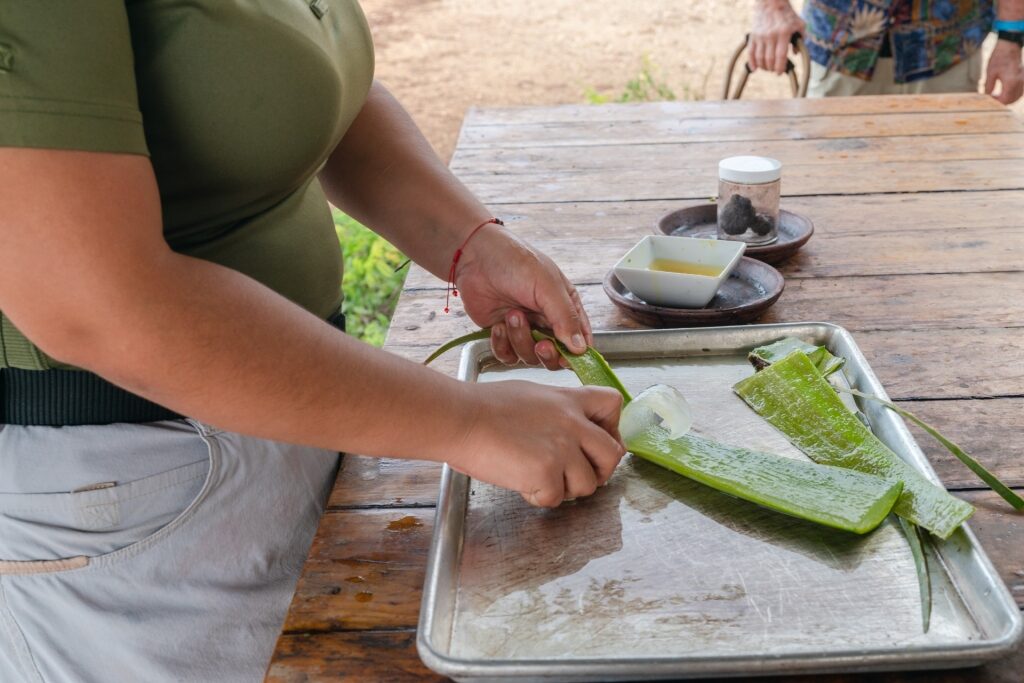
Aruba Aloe
For colorful knitwear and carved wood items, the Aruba Flea Market is a great place to start. ArtisA Gallery in San Nicolas is the place to head for locally painted canvases.
Aruba Aloe is also a fantastic stop to stock up on organic products straight from the source. You can even join a factory tour to see where your skin care products come from.
There are also plenty of designer names to be found across Aruba’s shopping spots, with Renaissance and Paseo Herencia being two of the best-rated malls. In Paseo Herencia, pop into The Mask, where ancient traditional wooden carvings take center stage.
It’s good to know before going to Aruba that single-use plastic bags have been banned, so bring a tote to transport all your new treasures home.
Aruba Has a Nature Code of Conduct
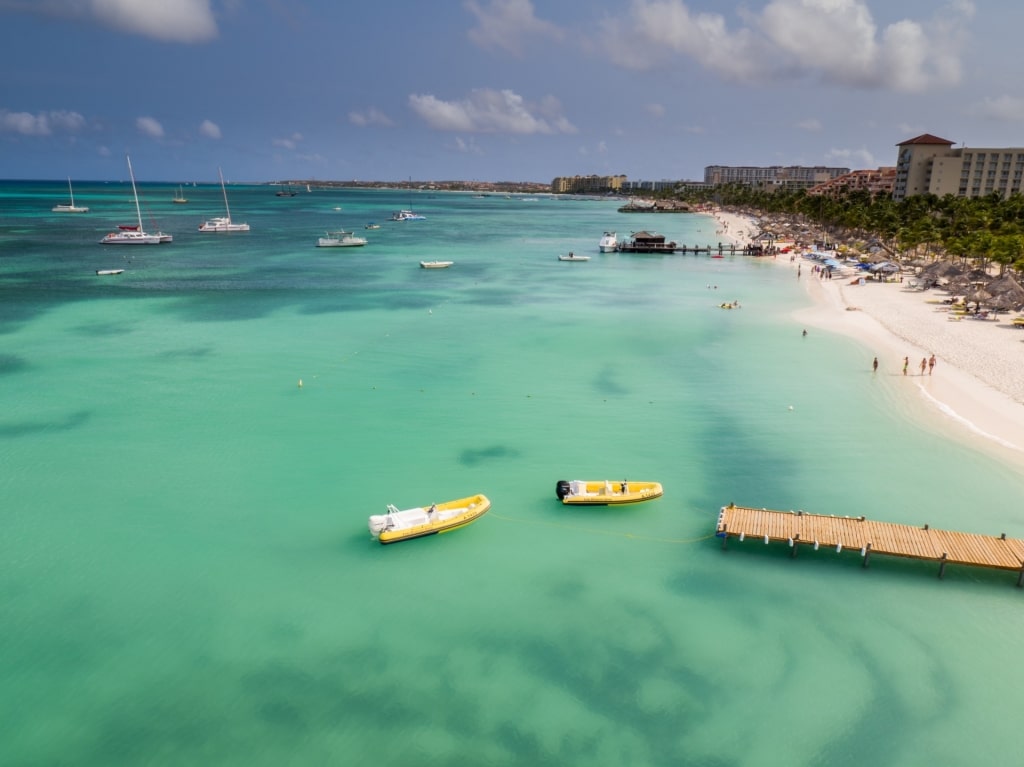
Beach in Aruba
One of the most important things to know before going to Aruba is that the island has a Code of Conduct.
This might sound rather serious, given Aruba is known for its happy and carefree atmosphere. However, the main focus of this collection of rules is to help preserve the island’s fauna and flora and keep the island a laid-back destination for all.
Many of these regulations are common sense, such as dressing appropriately when visiting cultural attractions like churches, or positively fun, like respecting “island-time” by slowing down and enjoying yourself.
Others, however, are more specific and seek to protect the island’s natural resources. For example, climbing on the protected Fofoti trees, taking any shells or coral from the beaches, and picking up starfish are all forbidden.
So is feeding turtles and iguanas. These are all firm rules that are essential to maintaining Aruba’s ecosystem and some are even punishable by a fine.
Understand Tipping & Local Currency

Restaurant in Aruba
For the most part, it’s easy to pay by international credit card (some establishments don’t accept American Express) in the majority of upscale beach bars, restaurants, rental centers, and boutiques. The local currency is the Aruban florin, but United States dollars are widely accepted, though sometimes change may be returned in florin.
Still, you might find the exchange rate more favorable if you convert some currency before arriving, especially if you plan to do your souvenir shopping at street stalls or dine at one of the smaller beach restaurants.
It’s also good to carry some small bills for tipping. While not obligatory, it’s certainly appreciated, especially for servers in restaurants. Offer around 10 to 15%, at your discretion, or a little on top for taxis and bar staff. Some restaurants add a service charge to the bill and you are not expected to tip on top of that.
Pack Your Binoculars
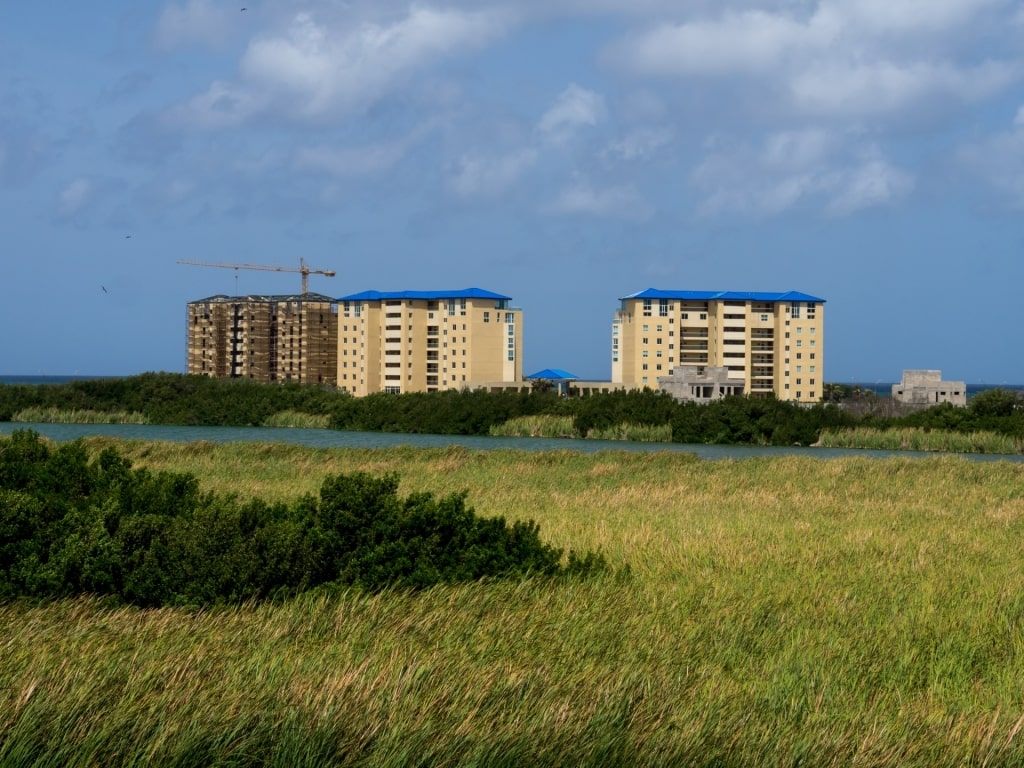
Bubali Bird Sanctuary
Birders are nearly as spoiled as beachgoers, with the possibility to spot some 200 species of birds, making packing your binoculars an essential Aruba travel tip. This is especially true if you plan to visit the Bubali Bird Sanctuary, a verdant wetland just beyond Palm Beach.
From the watch tower above the green oasis, you’re well-positioned to sight migratory and native species. Binoculars will come in handy to spot some of the smaller species, such as bananaquits or the fast-moving frigatebird above.

Burrowing owl
Especially worth keeping an eye out for is the shoco, a small burrowing owl that is Aruba’s national symbol. The bright green-hued prikichi, meanwhile, is the nation’s national bird. Both of these subspecies are endemic to Aruba.
Read: Best Things to Do in Aruba with Kids
Consider Combining All Three of the ABC Islands

Willemstad, Curaçao
Aruba is one of a group of islands more commonly known as the ABC Islands. The largest of the group, Curaçao, is crammed with cultural attractions alongside its sensational shorelines.
Offbeat Bonaire is by far the most laidback of the trio. Those in the know would certainly suggest combining all three into an unforgettable island-hopping vacation.
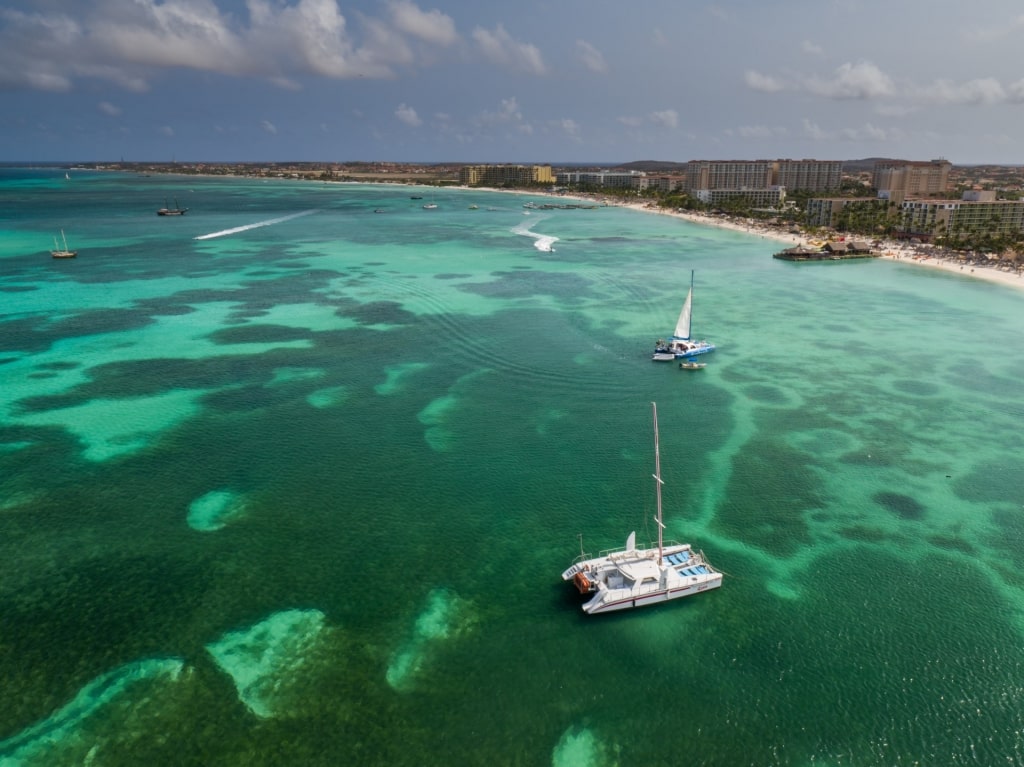
Aruba
Now you’re equipped with all the expert Aruba advice you need, browse Celebrity’s Aruba cruises to start planning your next Caribbean getaway.
